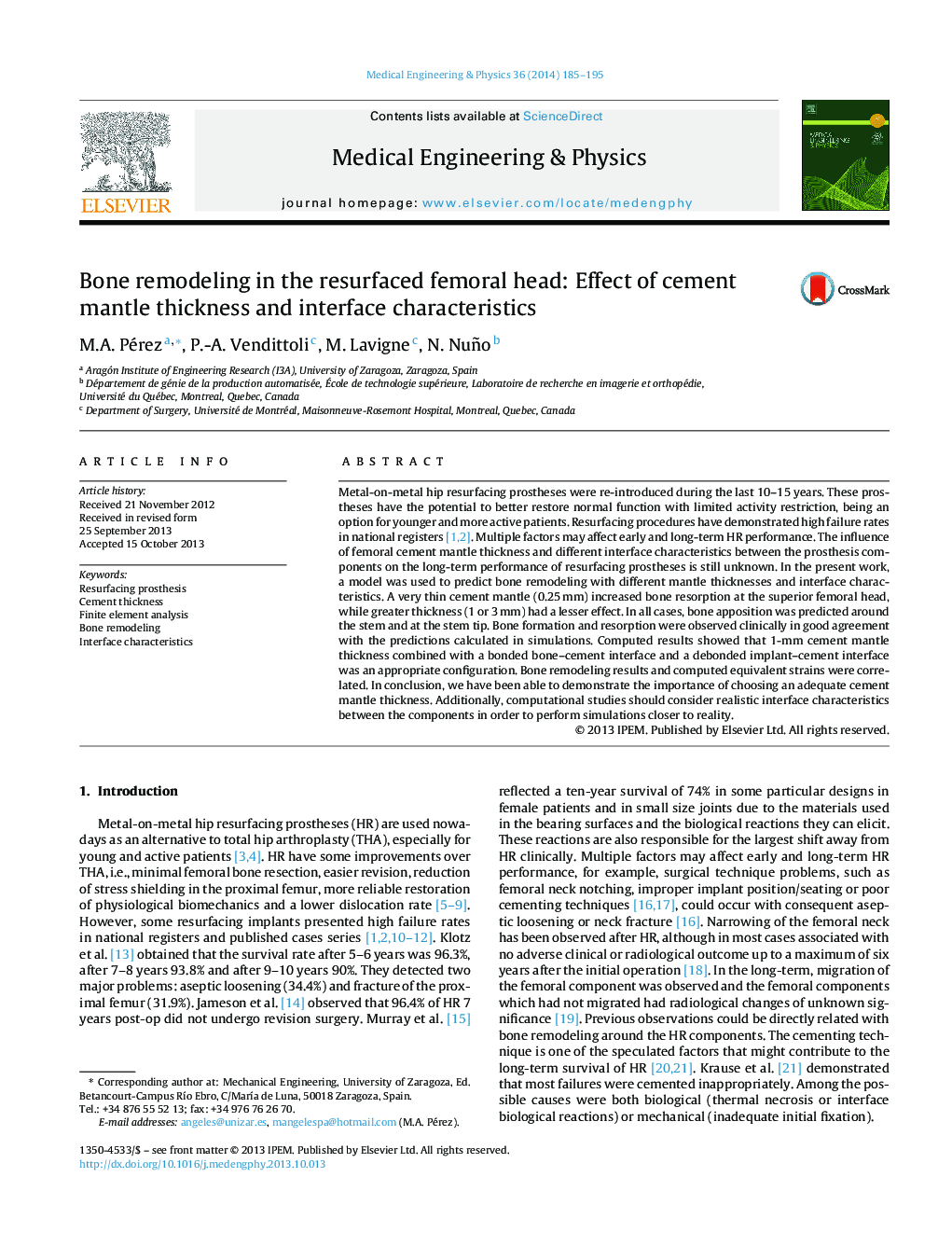| Article ID | Journal | Published Year | Pages | File Type |
|---|---|---|---|---|
| 875997 | Medical Engineering & Physics | 2014 | 11 Pages |
Metal-on-metal hip resurfacing prostheses were re-introduced during the last 10–15 years. These prostheses have the potential to better restore normal function with limited activity restriction, being an option for younger and more active patients. Resurfacing procedures have demonstrated high failure rates in national registers [1] and [2]. Multiple factors may affect early and long-term HR performance. The influence of femoral cement mantle thickness and different interface characteristics between the prosthesis components on the long-term performance of resurfacing prostheses is still unknown. In the present work, a model was used to predict bone remodeling with different mantle thicknesses and interface characteristics. A very thin cement mantle (0.25 mm) increased bone resorption at the superior femoral head, while greater thickness (1 or 3 mm) had a lesser effect. In all cases, bone apposition was predicted around the stem and at the stem tip. Bone formation and resorption were observed clinically in good agreement with the predictions calculated in simulations. Computed results showed that 1-mm cement mantle thickness combined with a bonded bone–cement interface and a debonded implant–cement interface was an appropriate configuration. Bone remodeling results and computed equivalent strains were correlated. In conclusion, we have been able to demonstrate the importance of choosing an adequate cement mantle thickness. Additionally, computational studies should consider realistic interface characteristics between the components in order to perform simulations closer to reality.
